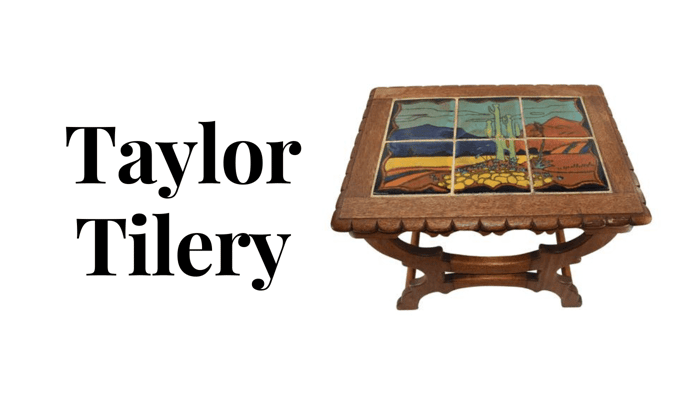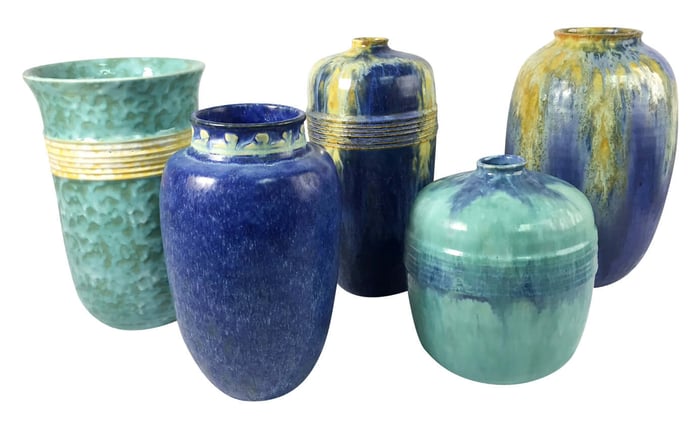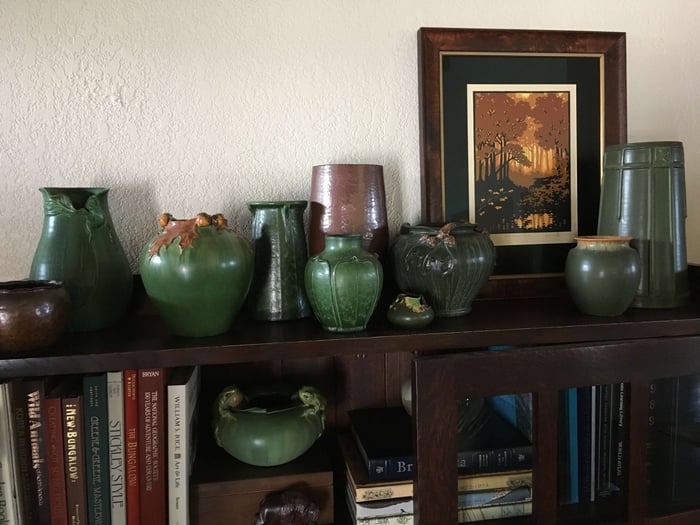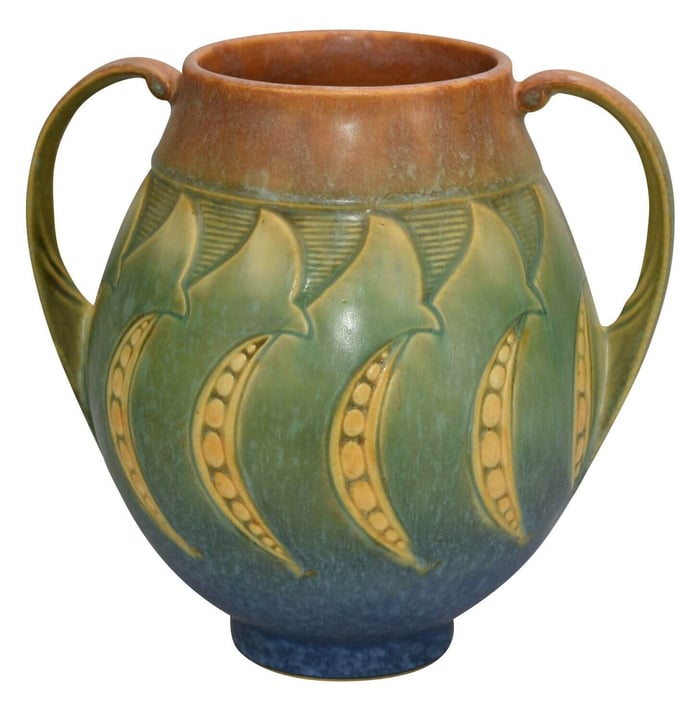Taylor Tile
During the 1920s a quickly rising building boom began in southern California, known as the “Golden Era of Tile Making”. Thousands of newcomers during the western migration were eager to settle and build on their new land purchases. The increased demand of wanting to develop their properties brought about many tileries and expanded the Arts and Crafts movement. The early Spanish settlers that colonized there also introduced their use of brightly-colored ceramic tile art used in architecture

During this time, brothers Eric A. Douglas and Frank M. Taylor began Taylor Tilery in Santa Monica, CA. This location in southern California was prominently known for good clay deposits and would become a large area supporting many pottery companies. Taylor Tilery produced decorative tiles, garden ornaments and chimney pots, mostly using the thick red-clay found nearby.

Sometime in the 1930s Douglas left Taylor Tilery and the company rebranded as Taylor Tile. Taylor then discovered a market for small tabletops. After Malibu Tile closed in 1934, Taylor hired designer William (Bill) Handley. Handley designed the famous bird panel designs and the reproduction of several of Taylor’s Malibu designs.
Records show Taylor Tilery operated from around 1934 to 1938. However, records from Santa Monica directories lists Santa Monica Brick Company operated under the names of Taylor Tilery, Monaco and Santa Monica Tile. Their red clay tiles often had soft-edge designs and are often marked with the trade name “Monaco” and Santa Monica Brick.

During the mid- to late-1930s, Douglas joins Taylor again. They resumed production of roofing tiles that were more profitable at that time. Douglas, wanting to have joint share in the business forced Taylor to split their operations between the Santa Monica (Douglas) and Whittier (Taylor) facilities. Douglas renamed his business as Santa Monica Tile and continued to produce decorative tile. These decorative tiles can be found all over Southern California.





